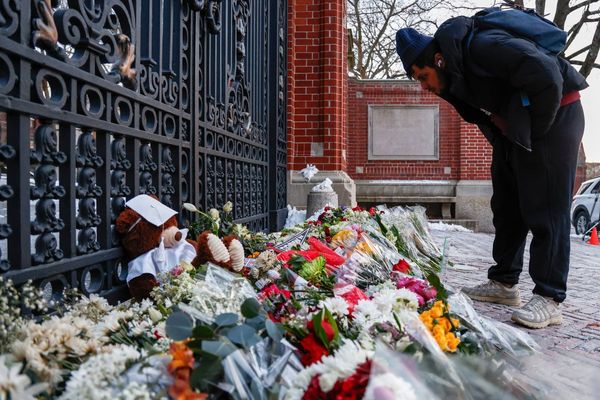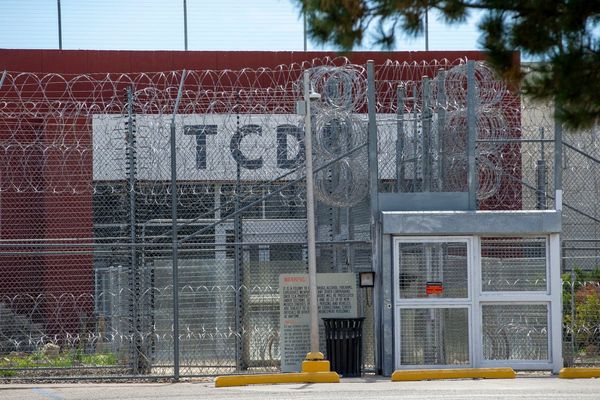
The shocking death toll from known ligature points in Australian prisons has risen to 64, new documents reveal.
In June, a Guardian Australia investigation revealed that 57 inmates across 19 correctional facilities had died using hanging points that prison authorities and state governments knew about but failed to remove.
In the worst example, a set of exposed bars in cells at Brisbane’s Arthur Gorrie correctional centre were used in 10 hanging deaths across almost two decades, despite early, clear warnings by coroners that they should be removed or covered with mesh.
The Guardian’s five-month investigation of 248 hanging deaths prompted outrage from families of the dead, justice reform experts, Indigenous leaders and the federal government.
The federal attorney general, Michelle Rowland, said the ongoing death toll from known hanging points was unacceptable and “deeply concerning”, and pledged to take up the issue with her state counterparts. The minister for Indigenous Australians, Malarndirri McCarthy, urged the states and territories, who have responsibility for correctional facilities, to act.
But records since released to the Guardian have exposed yet more deaths from known ligature points in Victoria and New South Wales, increasing the death toll.
In New South Wales, new information provided by the department of communities and justice shows a further three hangings from two commonly used hanging points at Long Bay prison complex – window bars and window grilles in cells.
Those hanging points have been used in suicides for decades. Some have been removed in that time but not all. Guardian Australia has now identified 10 hanging deaths from those two hanging points between 1995 and 2017.
A corrective services NSW spokesperson said the two hanging points in question have now been addressed in “several wings at Long Bay” by the installation of mesh screens.
“This continues the extensive work that has already been undertaken across several facilities as part of our coordinated statewide infrastructure program,” the spokesperson said.
“The removal of obvious ligature points is ongoing, and work is prioritised based on risk assessment.”
In addition, between October 1997 and March 1998, four men died using the same hanging point in their cell in Melbourne’s Port Phillip Prison – a point that prison management had been warned about before the facility opened in September 1997.
In the findings, made in 2000, the coroner said there were “significant problems” at Port Phillip prison, including inexperienced staff, training and cell design. The coroner noted that both the private operator, then known as Group 4 Correction Services, and the minister for corrections had been warned about the dangers of hanging points.
A legal group that visited the prison in July 1997 before it opened raised concerns with management about the hanging points later used by the men.
Victoria, like all state governments, committed to remove hanging points from its jails in response to the 1991 royal commission into Aboriginal deaths in custody.
In all four deaths, the coroner found the Victorian government and Group 4 had contributed to the deaths for failing to address hanging points.
“Designing out the more obvious of the hanging points in the general cells is but one of many options that should have been employed at Port Phillip in the plan to improve prisoner safety. It was not done,” the coroner wrote.
“It should have been done prior to the opening of the prison. It is not a question of hindsight. It was patently clear from the outset.”
In his recommendations, the coroner said “it may be considered necessary to prioritise the removal of any ‘obvious’ hanging points in all prison general (or mainstream) cells”.
Port Phillip prison, which is now privately run by G4S Australia, is scheduled to close in December. People in custody will be progressively transferred out of custody from July, with most to be moved to the new Western Plains correctional centre in Lara.
G4S declined to comment.
Corrective Services NSW said it had spent $3.9m to remove hanging points and dangerous furniture from Long Bay correctional complex. It said its extensive program to remove obvious ligature points was ongoing and prioritised based on risk assessments.
“The NSW government has invested $16m to make our prisons safer across the corrective services network by installing anti-ligature toilets, basins, tap wear, shower heads and beds in cells, as well as covering smoke detectors with covers and replacing sprinkler systems,” a spokesperson said.
“In addition to ligature removal and refurbishments, Corrective Services NSW has well-established policies and procedures for the care and management of inmates identified as being at risk of self-harm or suicide.”
In Australia, the crisis support service Lifeline is 13 11 14. Indigenous Australians can call 13YARN on 13 92 76 for information and crisis support. Other international helplines can be found at befrienders.org







